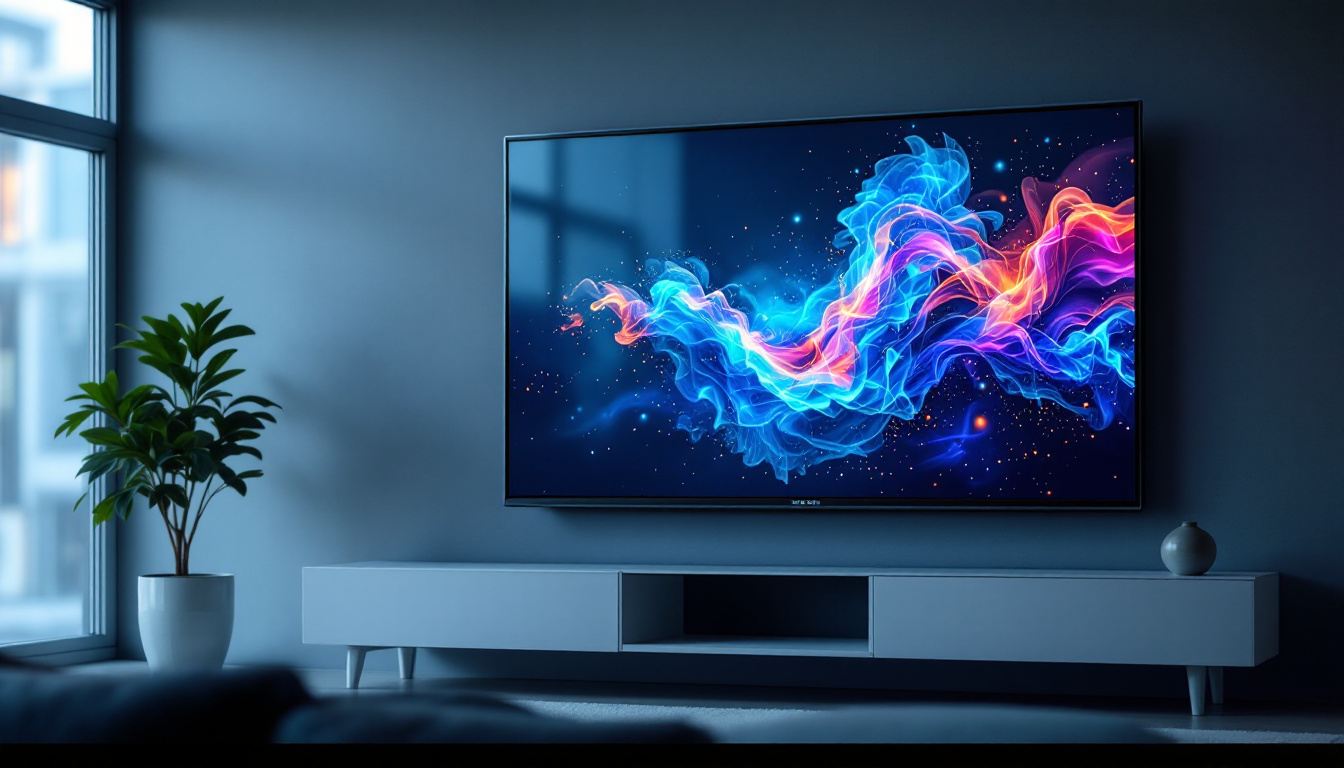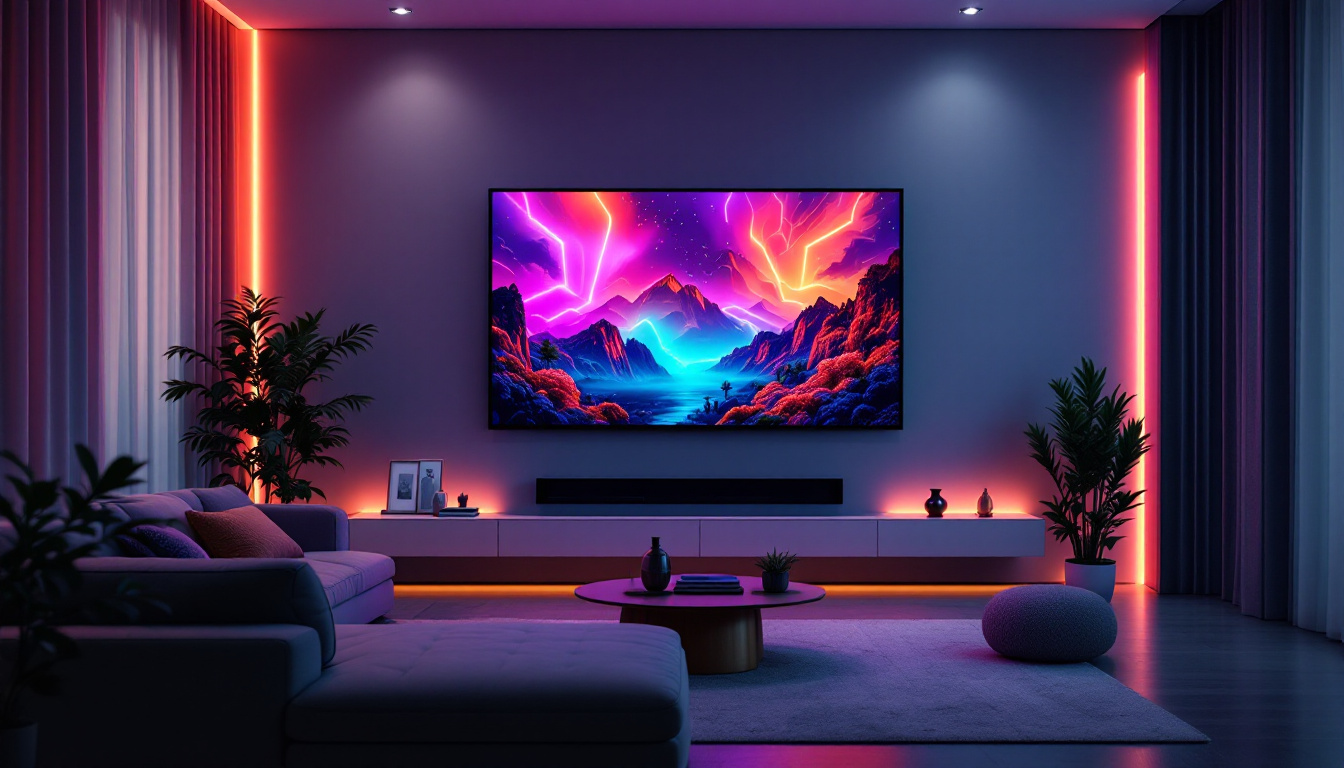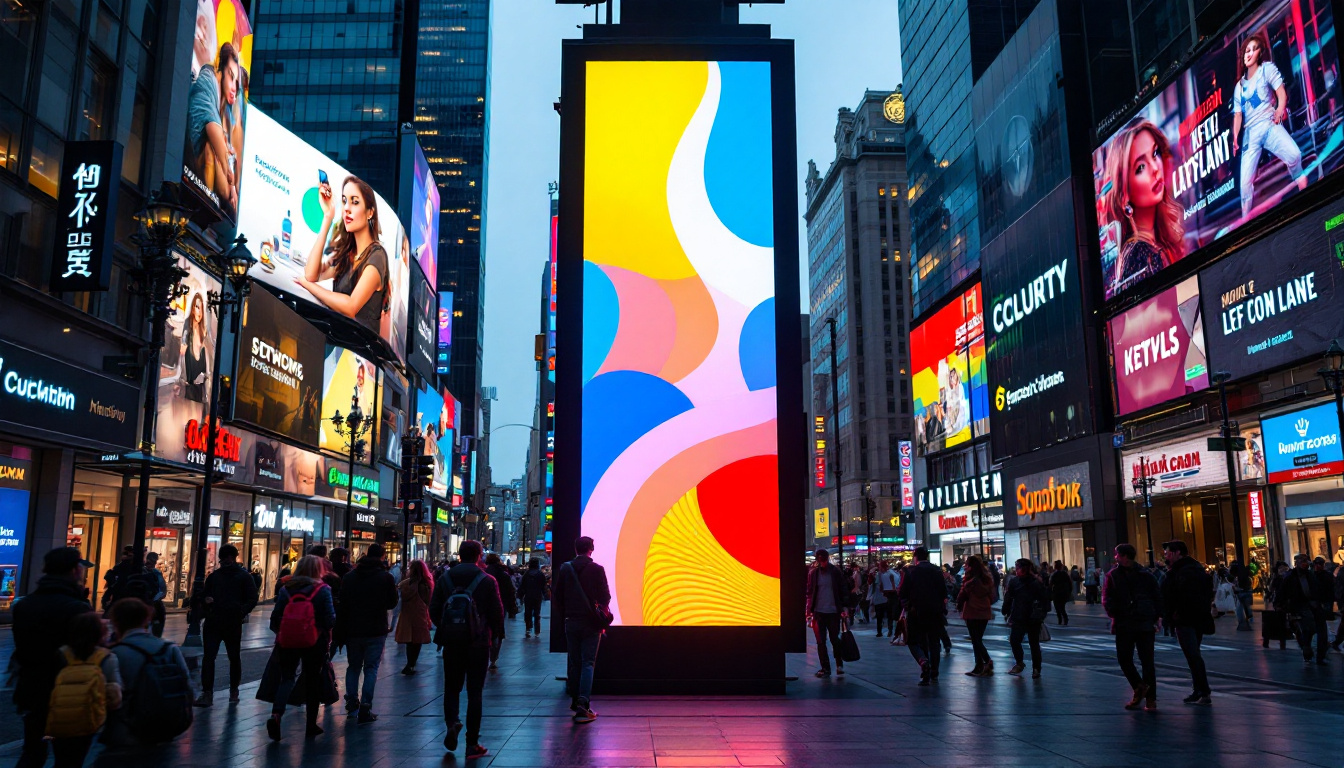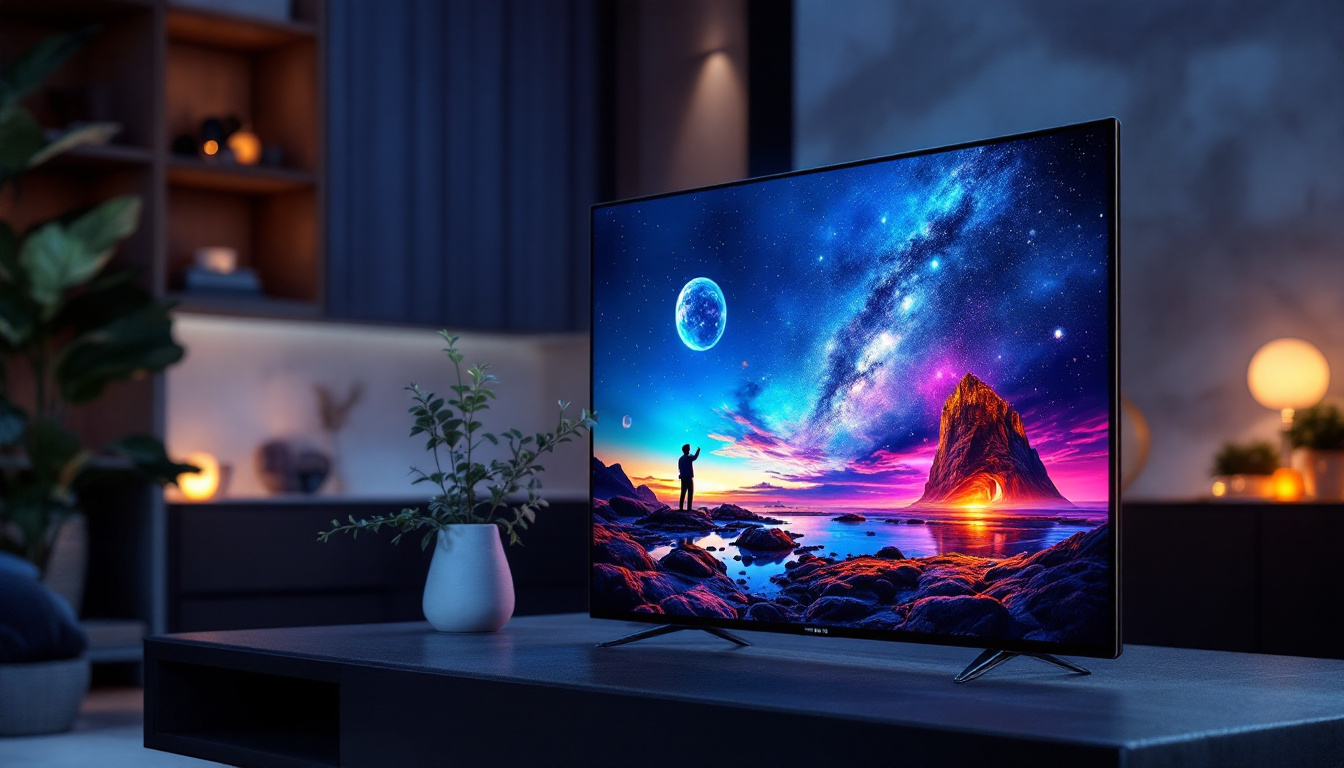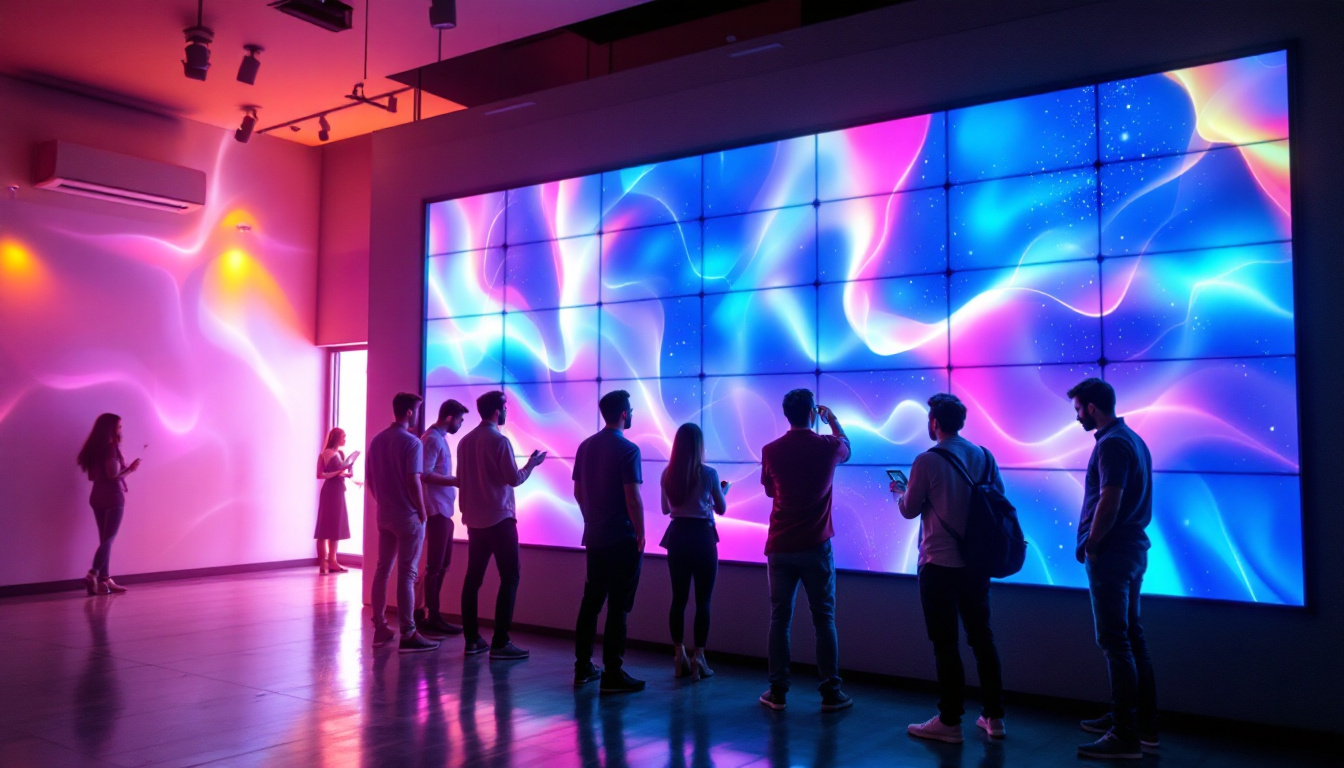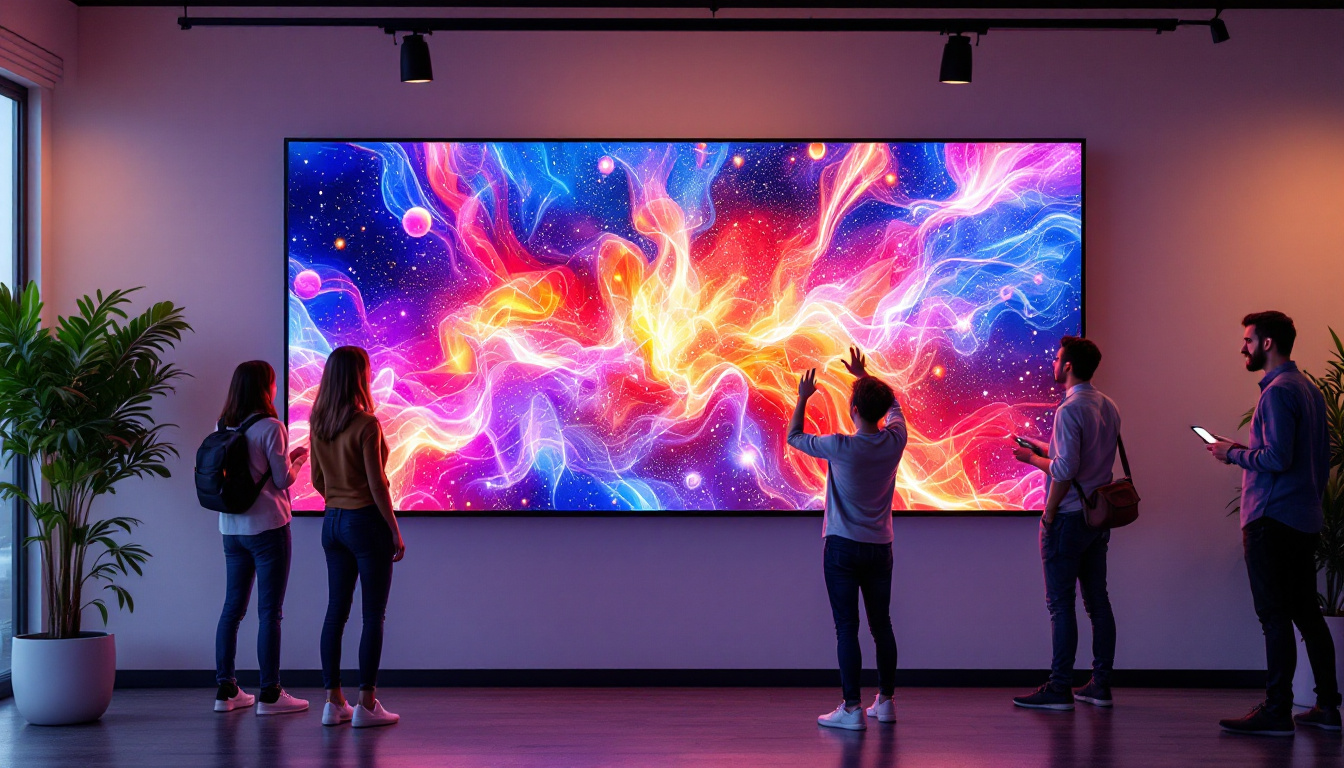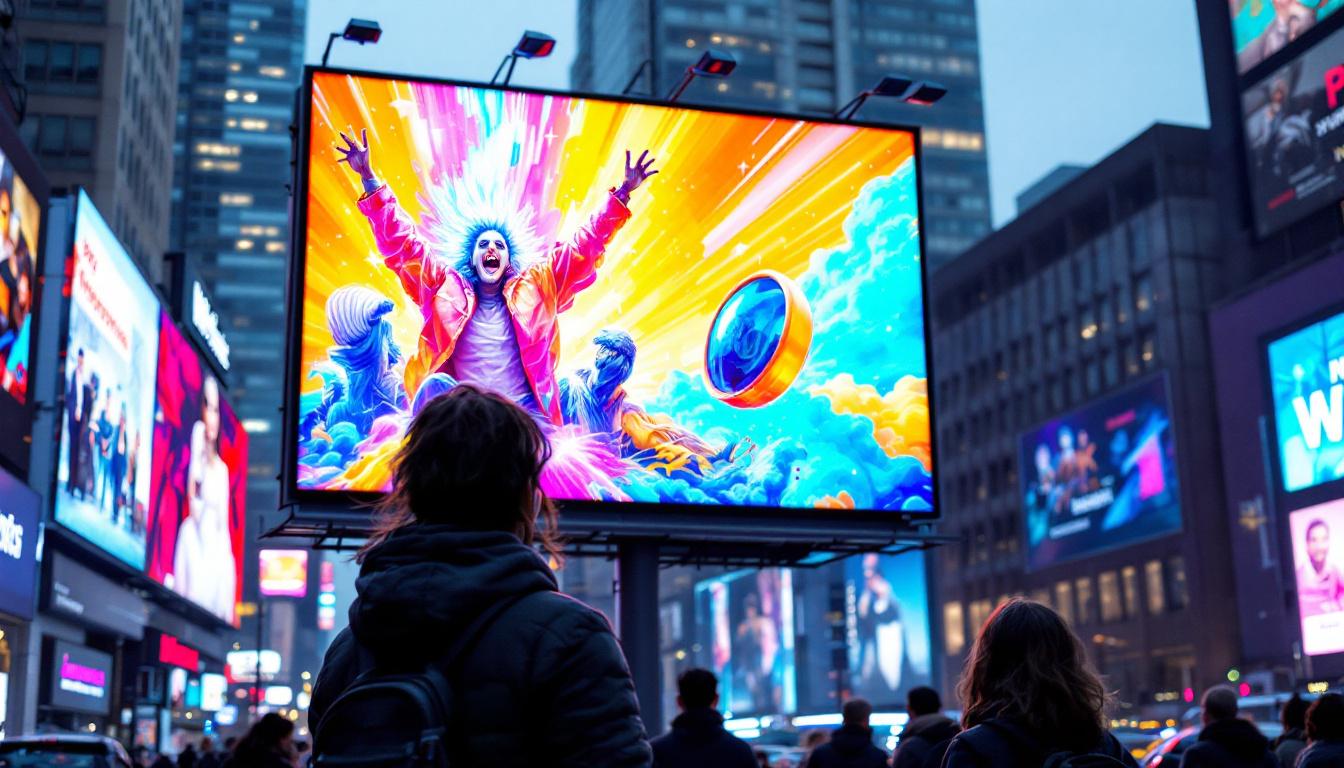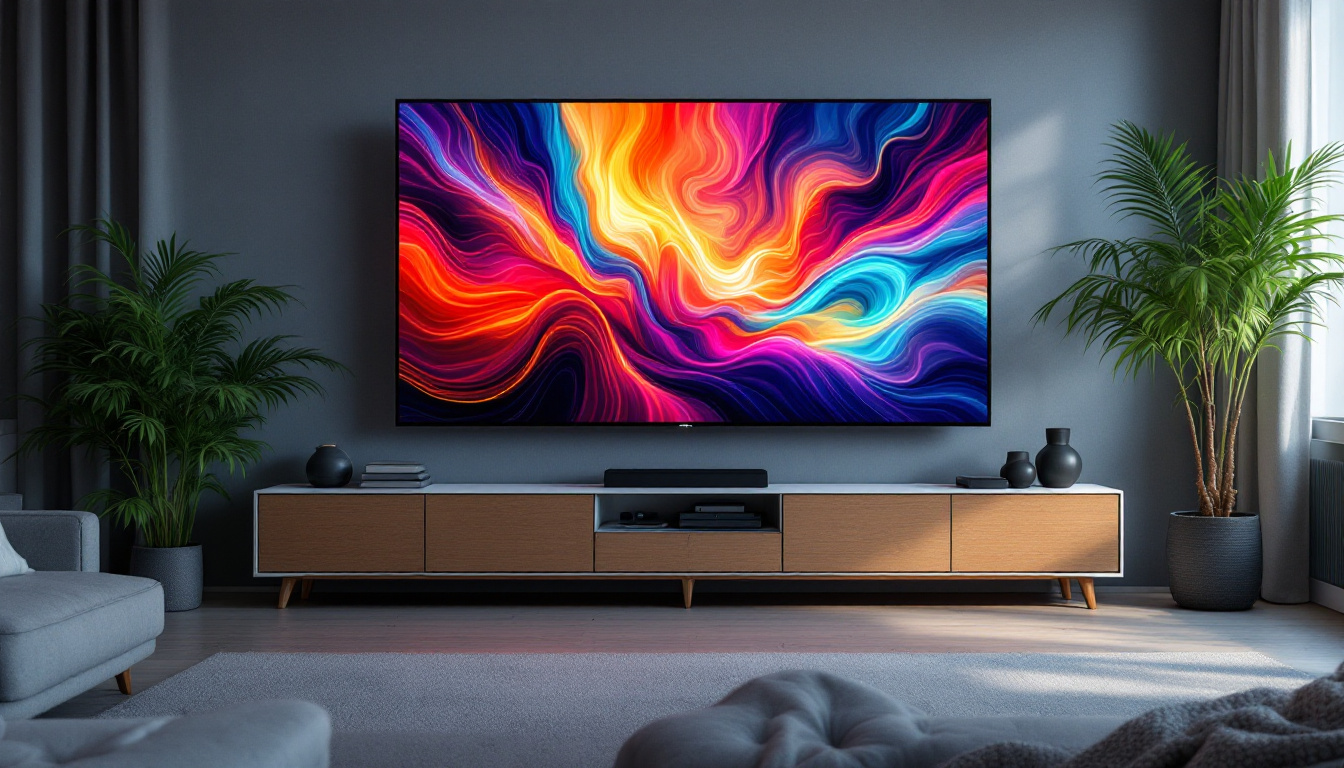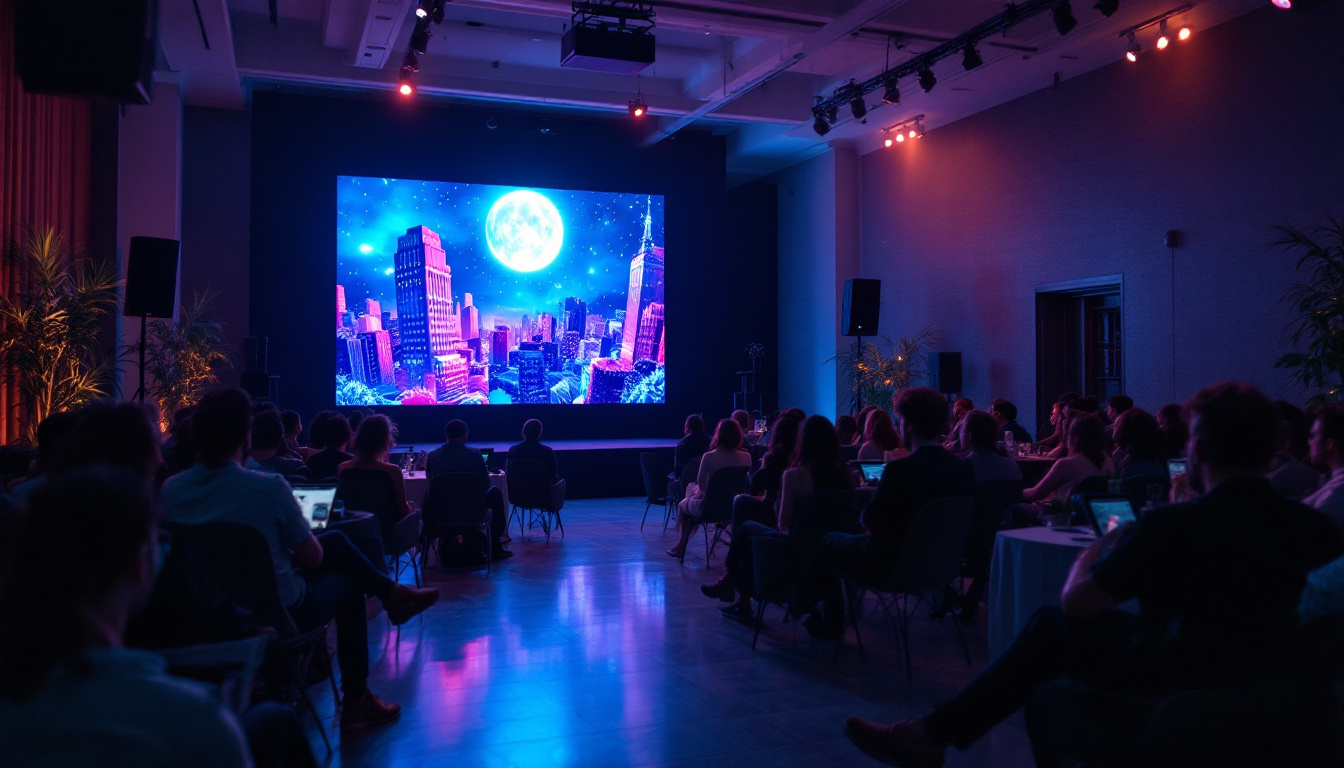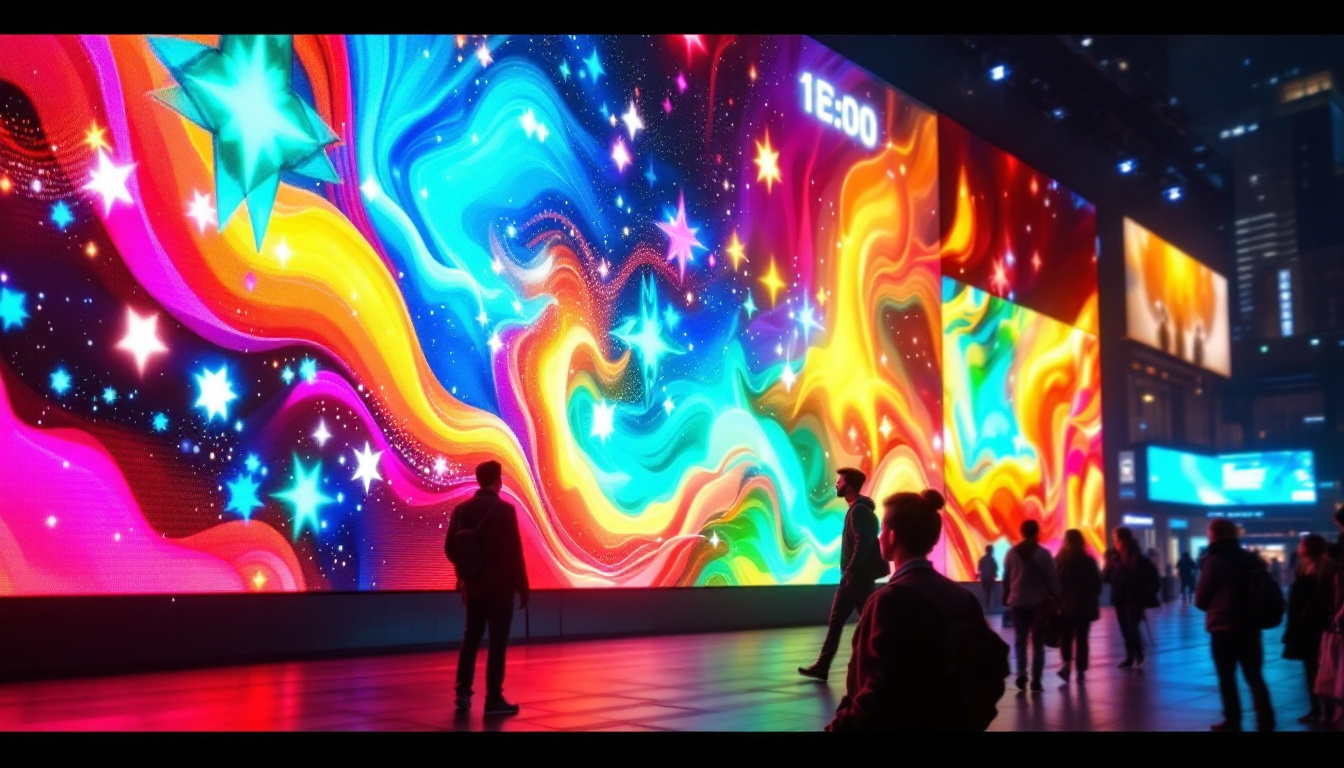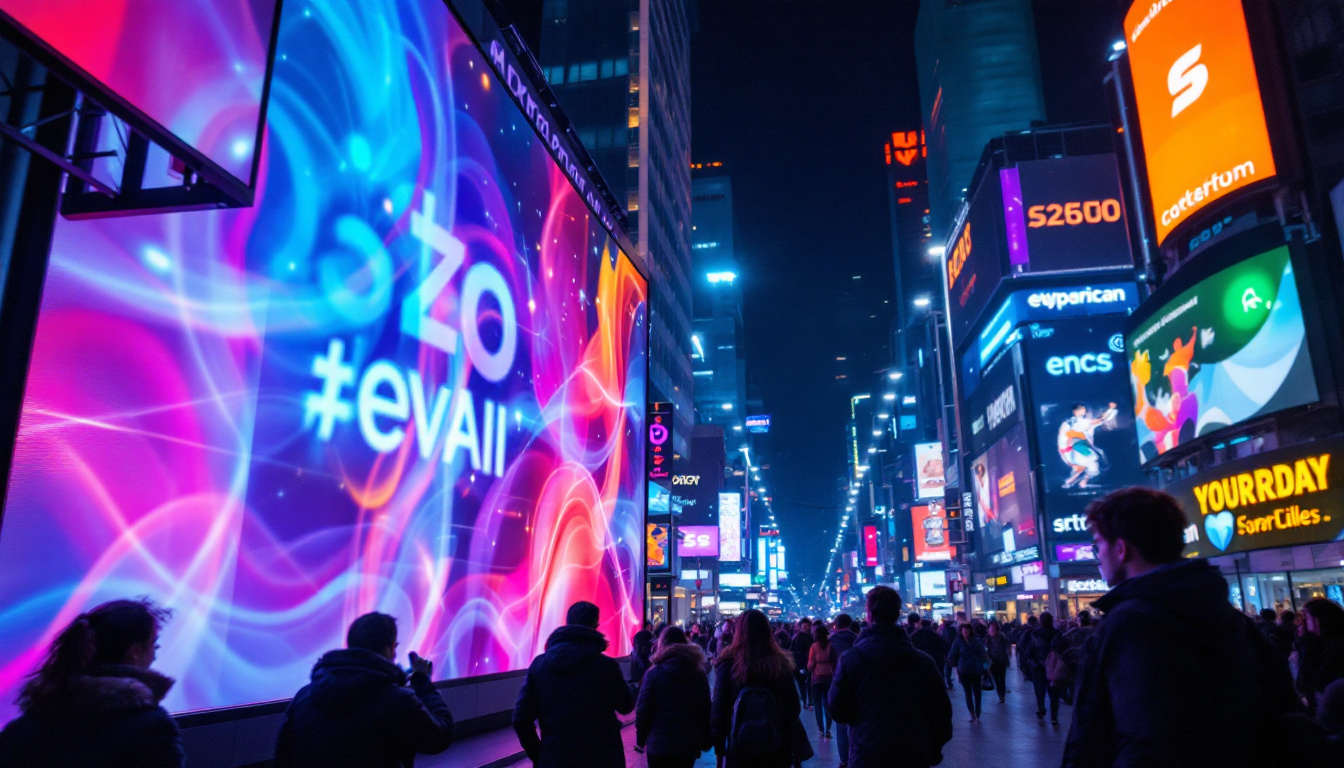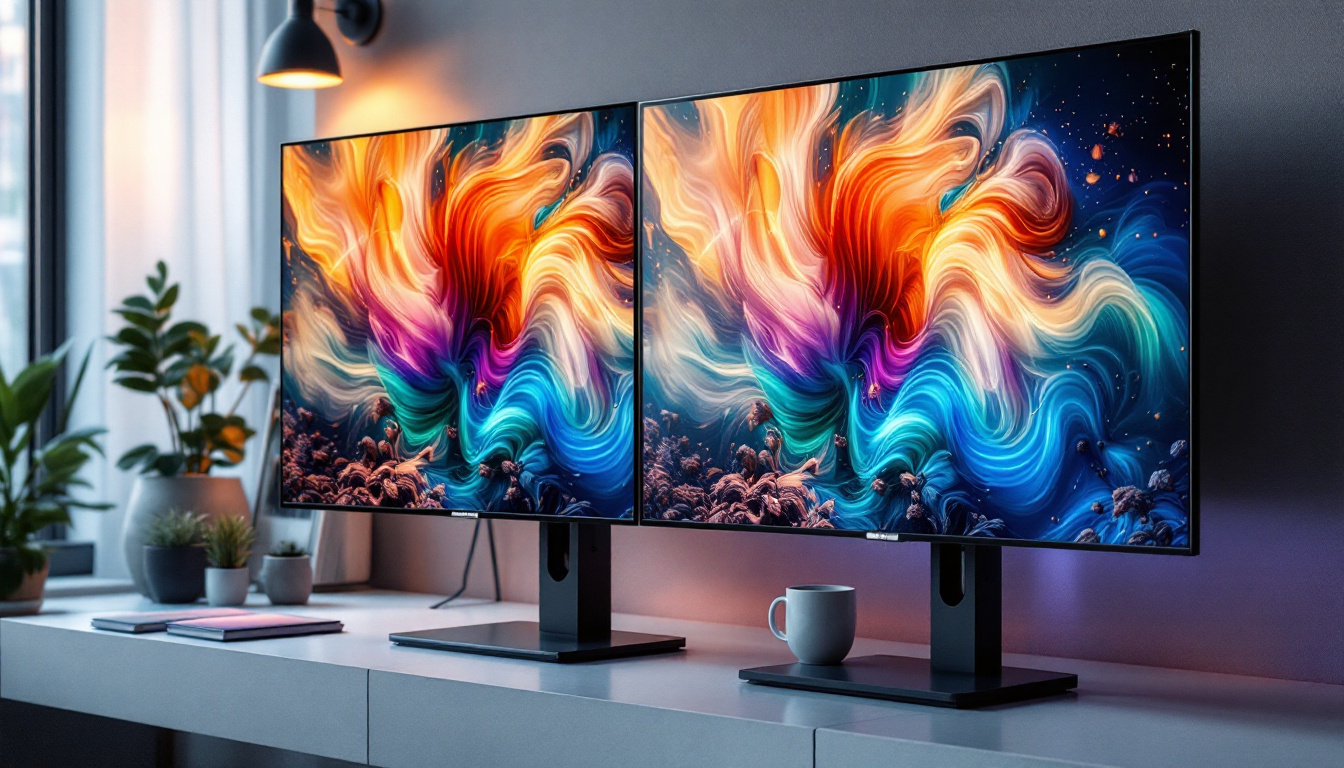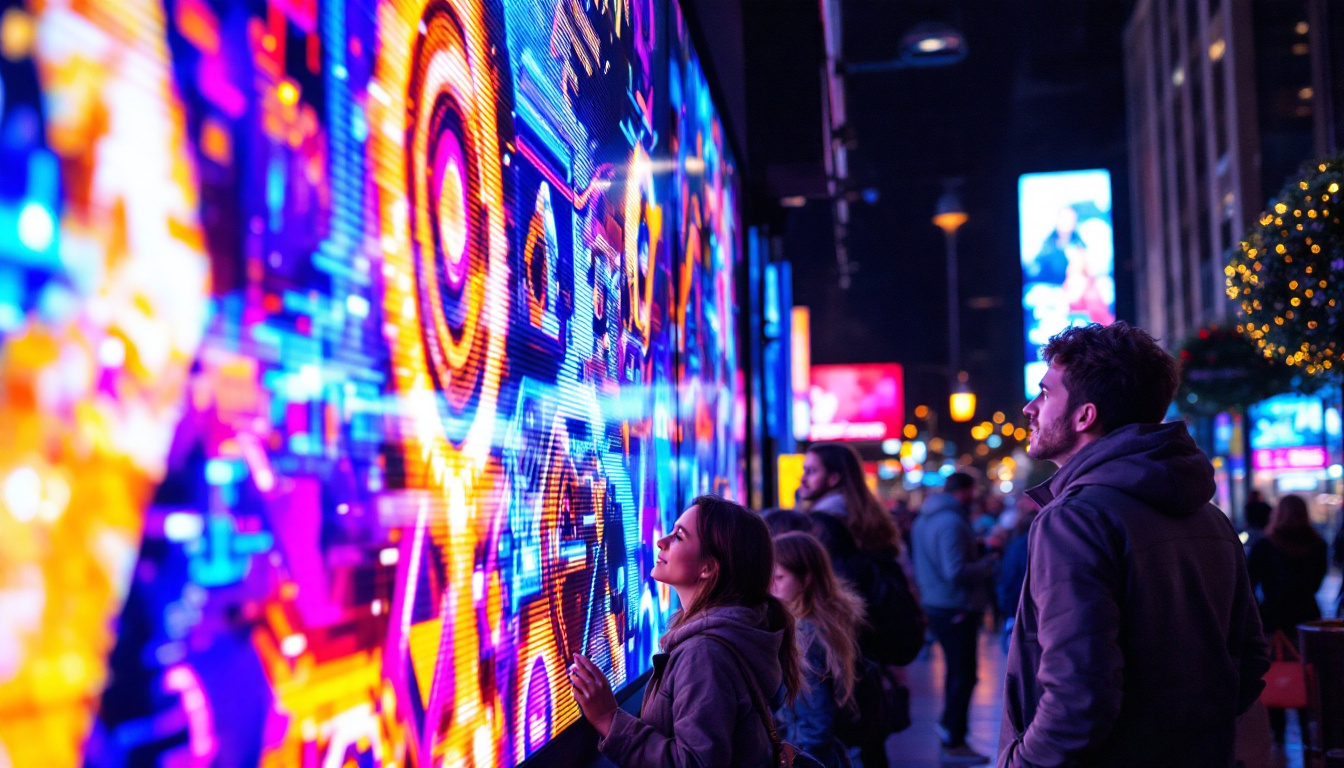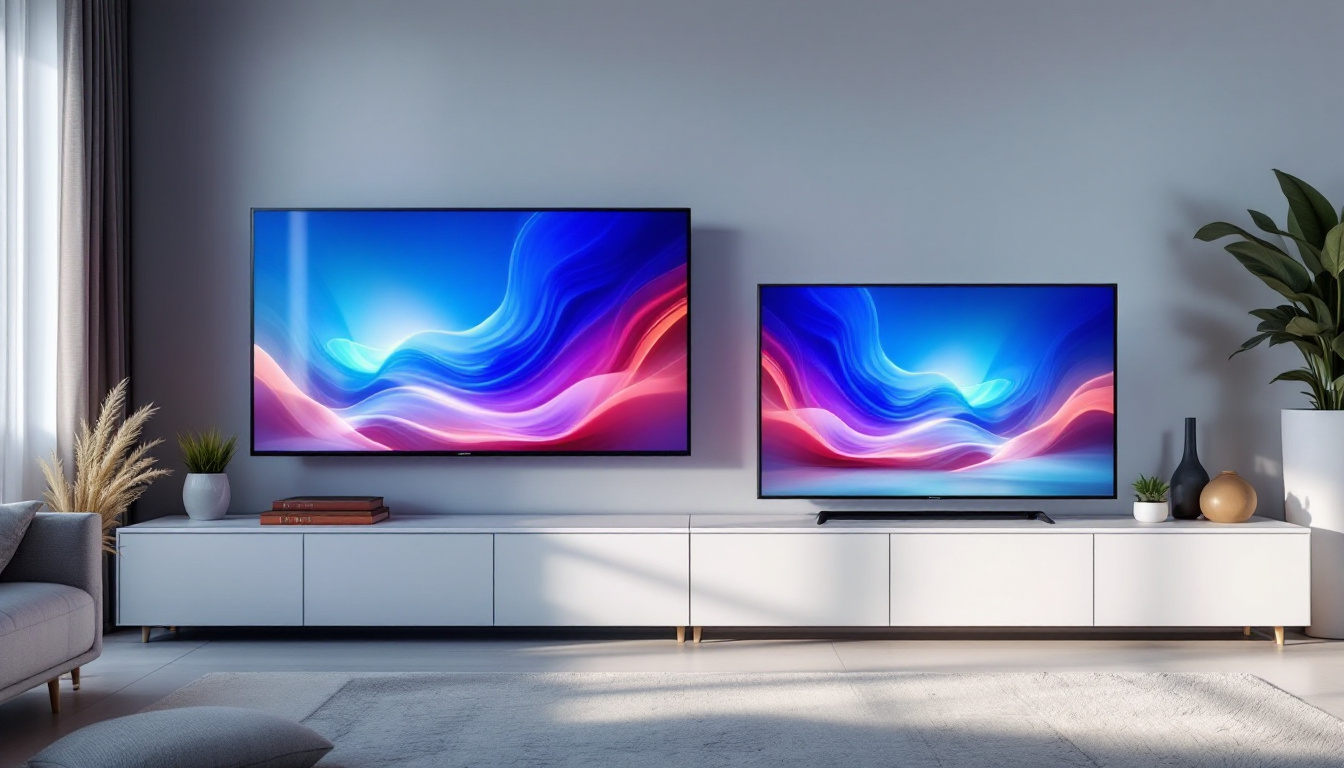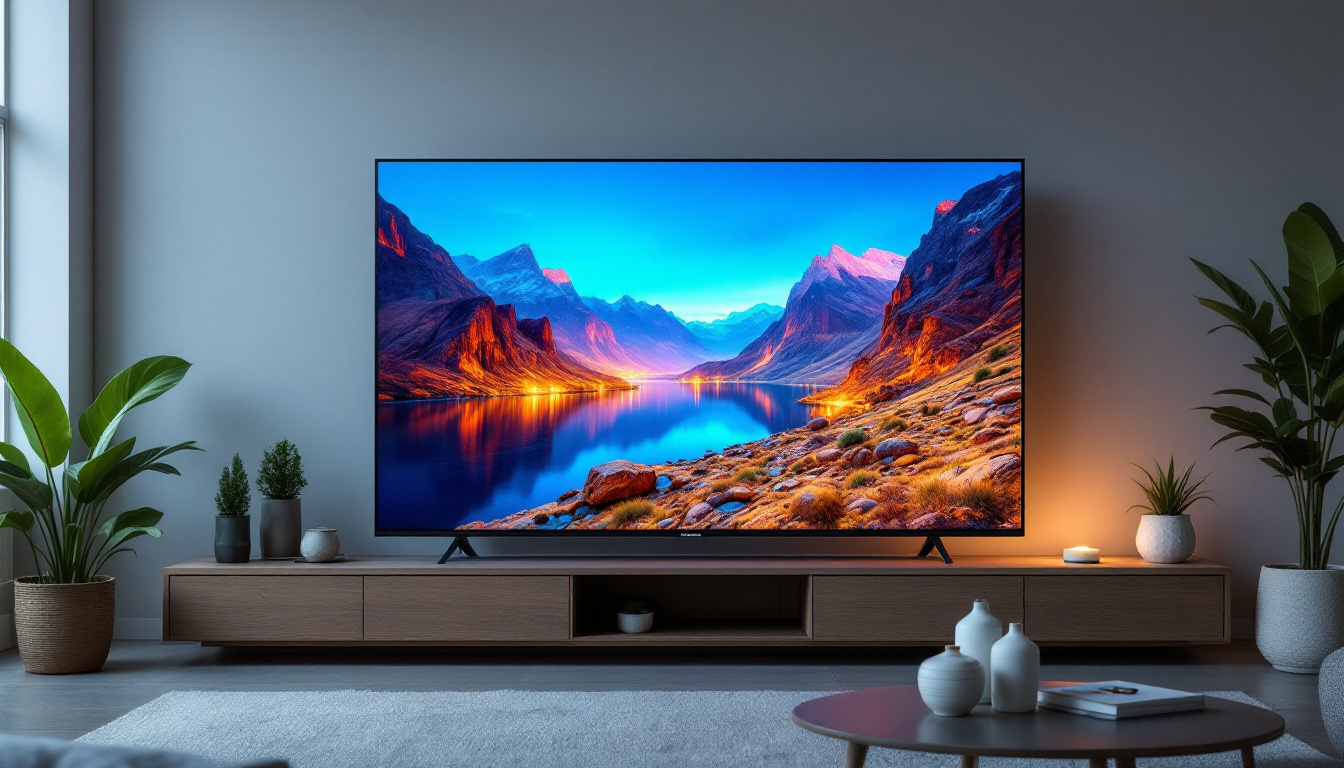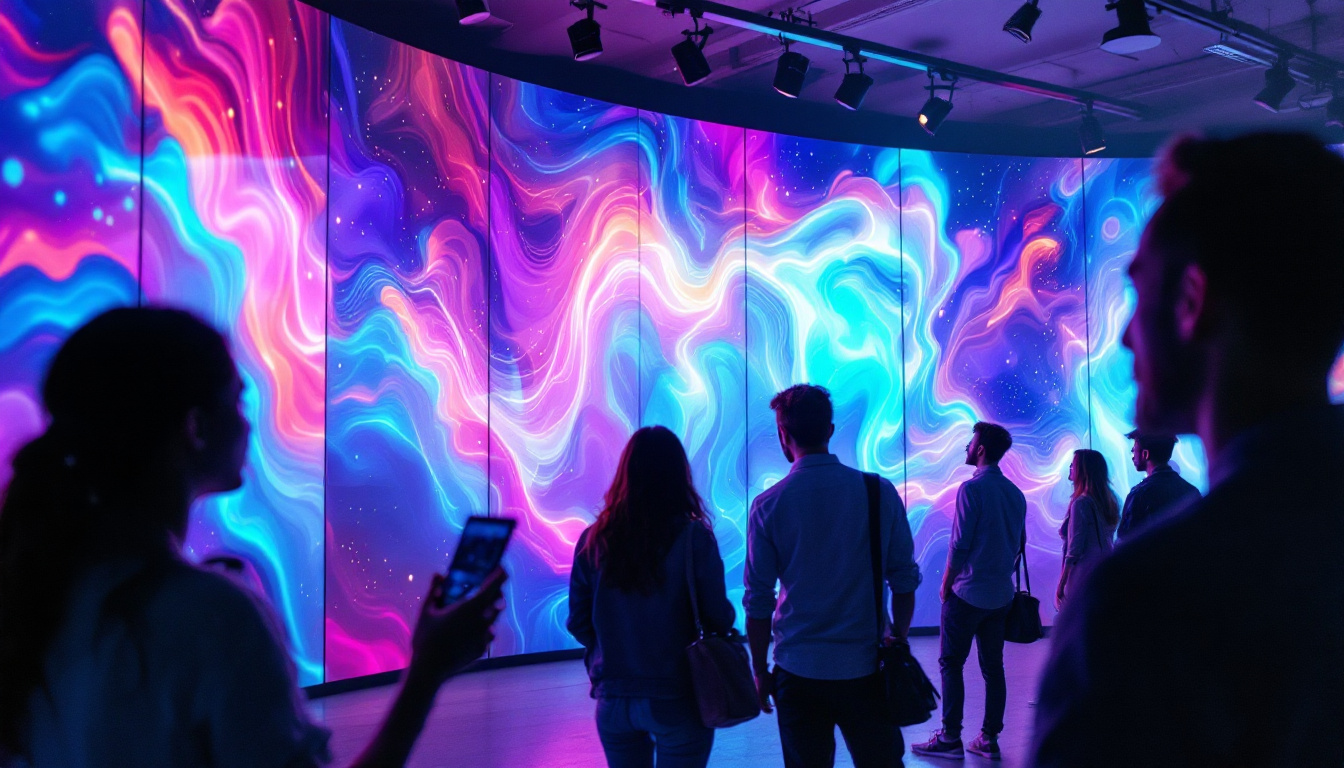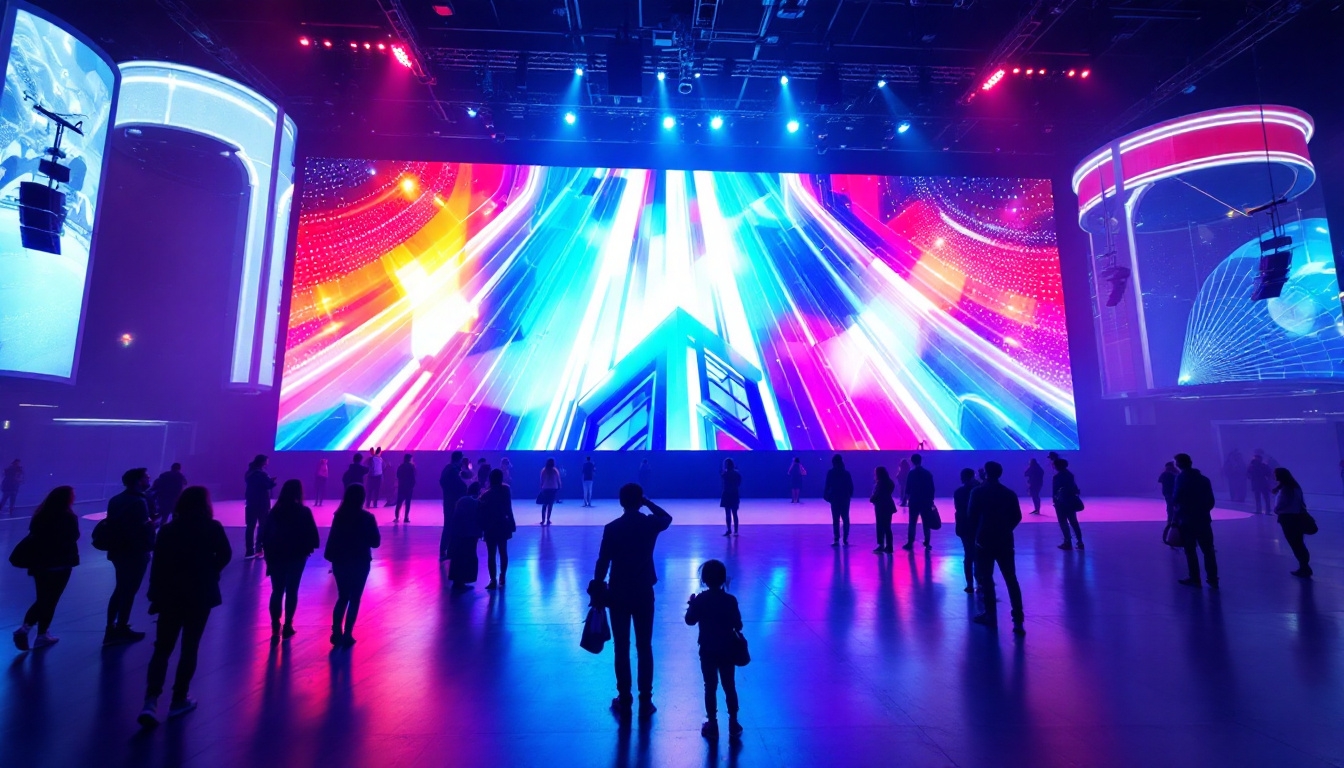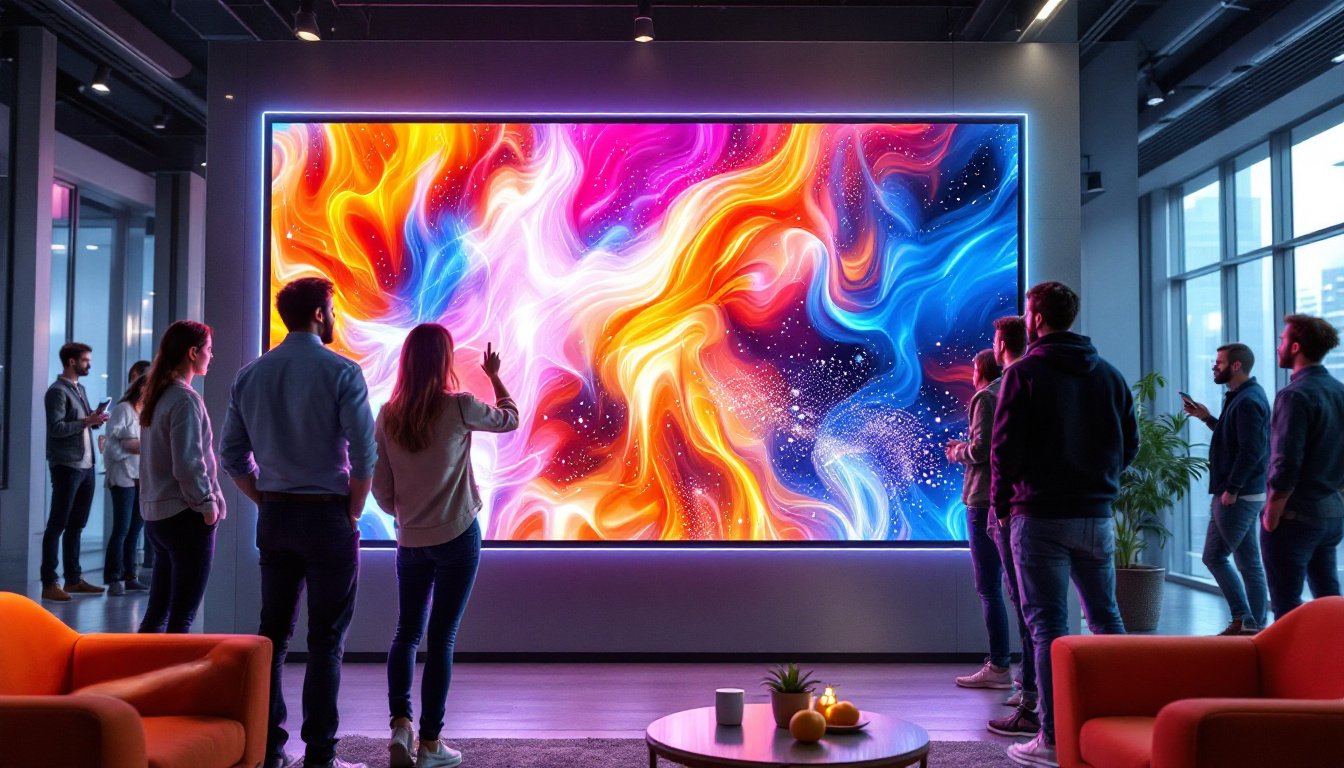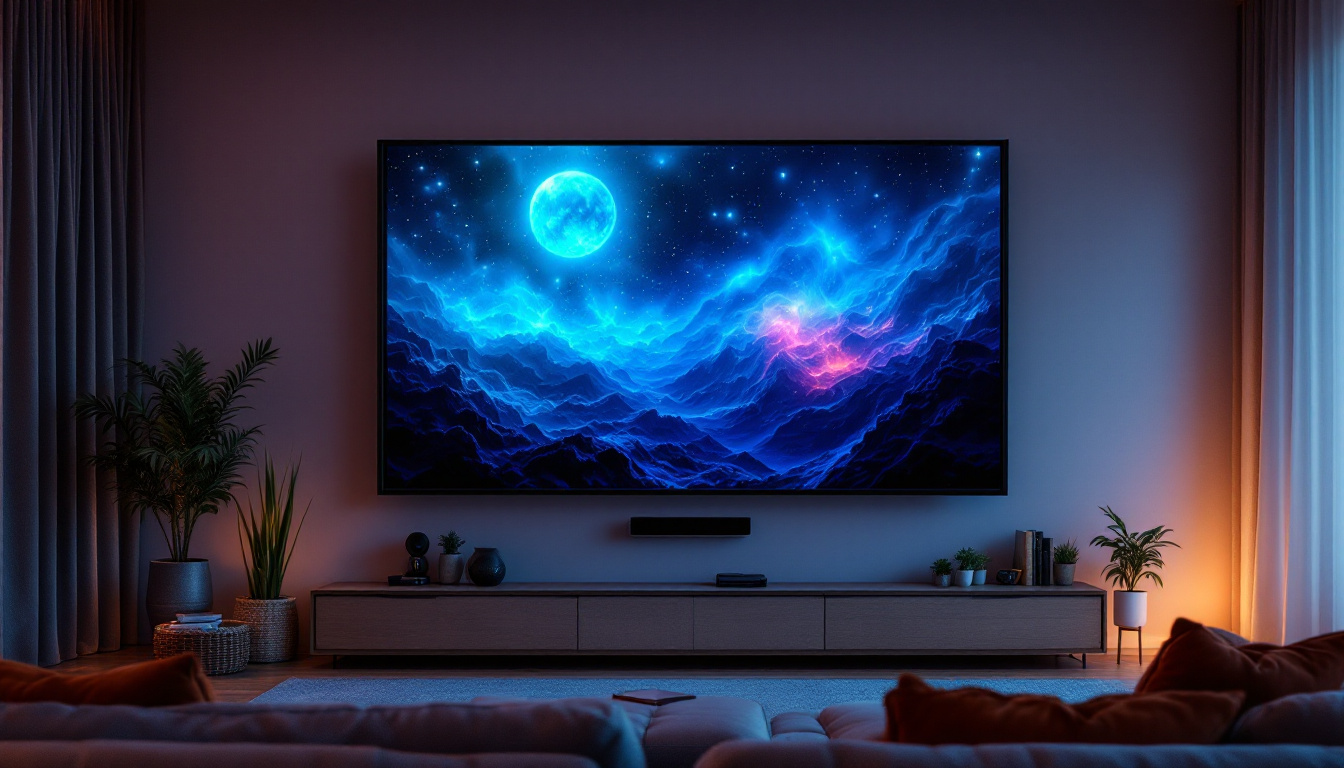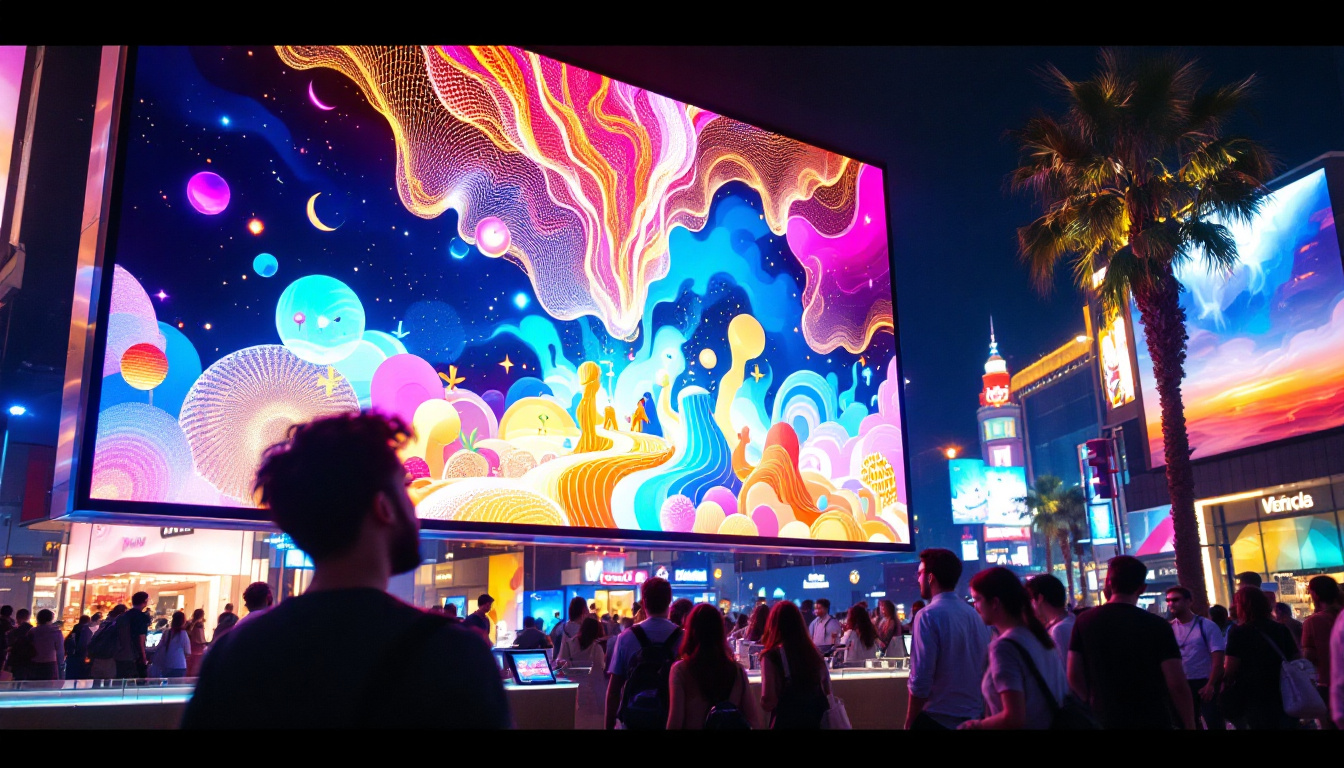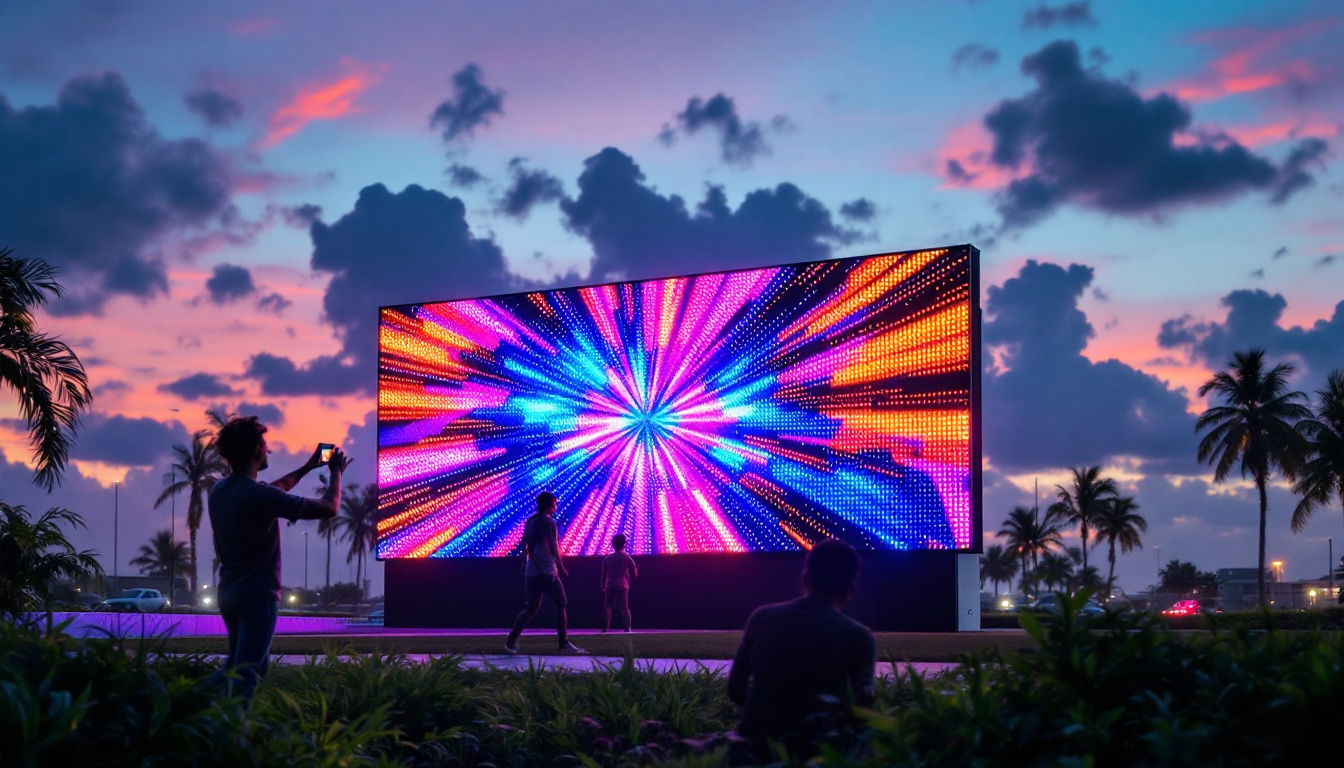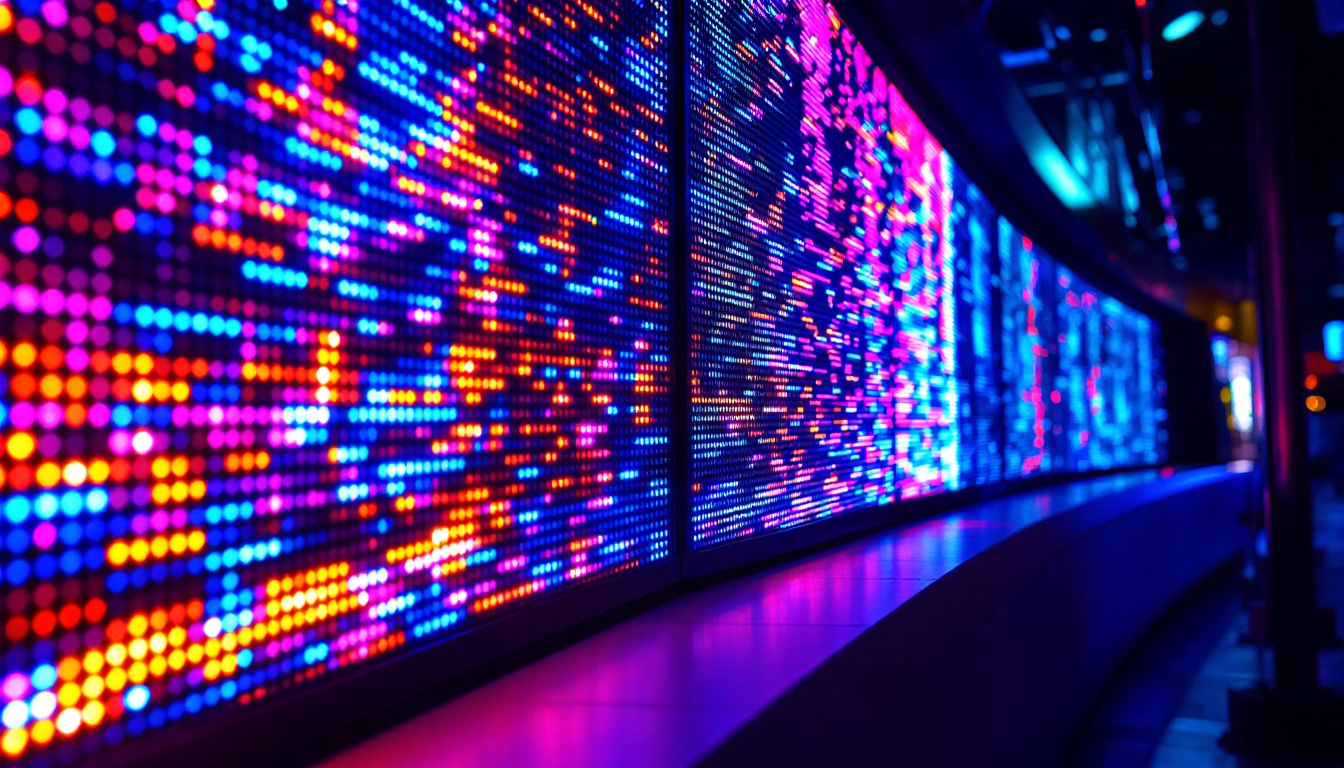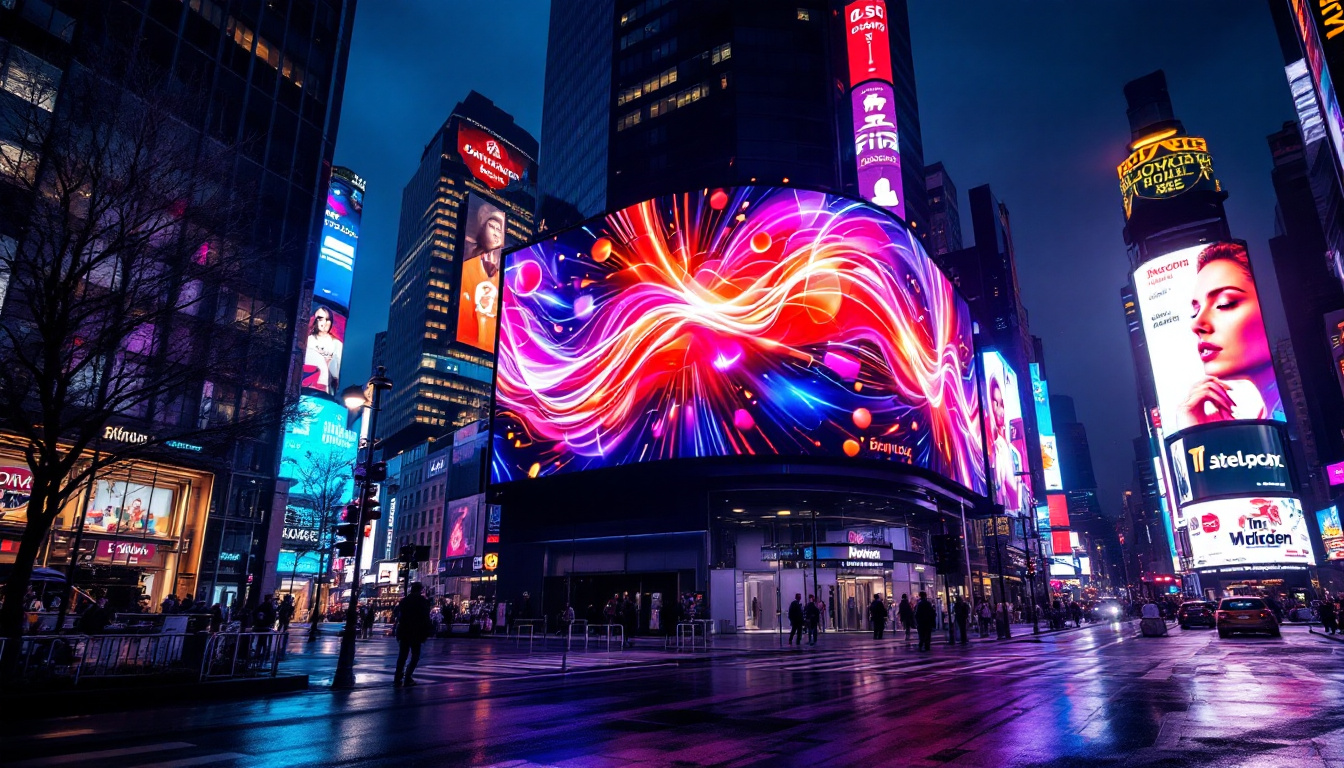In the realm of technology, LED displays have become a staple in both residential and commercial settings. They are known for their vibrant colors, energy efficiency, and versatility. However, when it comes to understanding the size of these displays, particularly the common 55-inch model, many find themselves asking: how does this translate into meters? This article will delve into the conversion from inches to meters, explore the specifications of 55-inch LED displays, and discuss their applications in various environments.
Understanding the Conversion: Inches to Meters
To fully grasp the dimensions of a 55-inch LED display, it is essential to understand the conversion from inches to meters. The inch is a unit of length commonly used in the United States, while the meter is the standard unit of measurement in most other parts of the world.
Conversion Formula
The conversion from inches to meters is straightforward. One inch is equivalent to 0.0254 meters. Therefore, to convert 55 inches to meters, the following calculation can be performed:
55 inches × 0.0254 meters/inch = 1.397 meters
This means that a 55-inch display measures approximately 1.397 meters diagonally. Understanding this measurement is crucial for those looking to integrate such displays into their spaces, as it helps in determining the appropriate viewing distance and overall layout.
Importance of Diagonal Measurement
When discussing screen sizes, it is important to note that the measurement typically refers to the diagonal length of the display. This is a standard practice in the industry, as it provides a uniform way to compare different screen sizes. However, this can sometimes lead to confusion regarding the actual width and height of the screen.
For a 55-inch display, the width and height can vary depending on the aspect ratio, which is the ratio of the width to the height of the screen. Most modern LED displays have an aspect ratio of 16:9, which is widely used for televisions and monitors. This means that the width of a 55-inch display is approximately 1.21 meters, while the height is about 0.68 meters.
Understanding the aspect ratio is particularly important when considering the types of content that will be displayed. For example, a 16:9 aspect ratio is ideal for watching movies and television shows, as it closely matches the format in which most media is produced. Conversely, if you plan to use the display for presentations or gaming, you may want to consider how the aspect ratio affects the viewing experience, as some games and applications may be optimized for different dimensions. Additionally, knowing the width and height can assist in ensuring that the display fits well within a designated space, whether it be a living room, office, or classroom.
Furthermore, the physical dimensions of the display can impact not just aesthetics but also functionality. For instance, a wider screen can enhance the viewing experience by providing more immersive visuals, especially in gaming or cinematic contexts. It can also facilitate multitasking, allowing users to have multiple windows open side by side without compromising visibility. Therefore, when selecting a display, it’s essential to consider both the diagonal measurement and the corresponding width and height to ensure it meets your specific needs and preferences.
Specifications of a 55-Inch LED Display
LED displays come with a variety of specifications that can influence their performance and suitability for different applications. Understanding these specifications is vital for making an informed purchasing decision.
Resolution
Resolution refers to the number of pixels that make up the display. A higher resolution means more pixels, resulting in sharper and clearer images. For a 55-inch LED display, common resolutions include Full HD (1920 x 1080 pixels) and 4K Ultra HD (3840 x 2160 pixels).
Full HD displays are sufficient for most viewing experiences, especially in home settings. However, for professional environments such as conference rooms or digital signage, 4K displays are becoming increasingly popular due to their superior image quality and detail.
Brightness and Contrast Ratio
Brightness is another critical specification, measured in nits. A typical 55-inch LED display may have a brightness of around 300 to 500 nits. This measurement indicates how well the display can perform in various lighting conditions. Higher brightness levels are particularly important for displays used in well-lit environments.
Contrast ratio, on the other hand, measures the difference between the darkest and brightest parts of the image. A higher contrast ratio results in more vivid colors and deeper blacks, enhancing the overall viewing experience. For LED displays, a contrast ratio of 1000:1 or higher is generally considered acceptable.
Viewing Angles
The viewing angle of a display is another essential factor to consider, especially for larger screens. A wider viewing angle allows more people to enjoy the content without distortion or color degradation. Most modern LED displays offer viewing angles of up to 178 degrees, making them suitable for group settings.
In environments such as classrooms or conference rooms, where multiple viewers may be seated at different angles, a display with a wide viewing angle can significantly enhance the overall experience.
Applications of 55-Inch LED Displays
55-inch LED displays are versatile and can be used in a variety of settings. Their size and specifications make them ideal for both personal and professional use.
Home Entertainment
In the realm of home entertainment, a 55-inch LED display serves as an excellent centerpiece for living rooms. With the ability to deliver stunning visuals and support various streaming services, these displays are perfect for movie nights, gaming sessions, and sports events.
Moreover, many modern LED TVs come equipped with smart features, allowing users to access apps, browse the internet, and connect with other smart devices seamlessly. This integration enhances the overall viewing experience, making it more interactive and engaging.
Commercial Use
In commercial settings, 55-inch LED displays are frequently used for digital signage, presentations, and advertising. Their vibrant colors and high-resolution capabilities make them ideal for attracting customers’ attention in retail environments.
Additionally, these displays are often employed in corporate settings for presentations and video conferencing. Their size allows for clear visibility from a distance, ensuring that all participants can engage with the content being presented.
Education and Training
In educational institutions, 55-inch LED displays are becoming increasingly popular in classrooms and lecture halls. They provide an effective way to present information and engage students through multimedia content.
These displays can also be used for interactive learning, enabling teachers to incorporate technology into their lessons. With the ability to connect to various devices, educators can easily share presentations, videos, and other educational materials with their students.
Installation Considerations for 55-Inch LED Displays
When installing a 55-inch LED display, several factors must be taken into account to ensure optimal performance and viewing experience.
Mounting Options
There are various mounting options available for 55-inch LED displays, including wall mounts, stands, and ceiling mounts. The choice of mounting option will depend on the intended use and the layout of the space.
Wall mounts are popular for home entertainment setups, as they save space and provide a clean look. Stands, on the other hand, offer flexibility in positioning the display and are often used in commercial settings for digital signage.
Viewing Distance
Determining the appropriate viewing distance is crucial for maximizing the viewing experience. For a 55-inch display, a general rule of thumb is to sit at a distance of 1.5 to 2.5 times the diagonal size of the screen. This means that viewers should ideally be seated between approximately 2.1 meters to 3.4 meters away for optimal viewing.
However, this can vary based on the resolution of the display. For 4K displays, viewers can sit closer without noticing pixelation, allowing for a more immersive experience.
Lighting Conditions
Lighting conditions in the room can significantly impact the performance of an LED display. It is essential to consider the amount of natural and artificial light present when positioning the display. In brightly lit environments, a display with higher brightness levels will be more effective in delivering clear images.
Additionally, using shades or curtains can help control glare and reflections, enhancing the overall viewing experience. For commercial settings, it may be beneficial to invest in displays with anti-glare technology to ensure visibility in various lighting conditions.
Maintenance and Care for LED Displays
Proper maintenance and care can significantly extend the lifespan of a 55-inch LED display. Regular cleaning and attention to environmental factors can help maintain optimal performance.
Cleaning Procedures
Cleaning the display screen should be done with care to avoid damage. It is advisable to use a microfiber cloth and a gentle cleaning solution specifically designed for electronics. Avoid using harsh chemicals or abrasive materials, as these can scratch the screen and affect image quality.
Additionally, it is essential to clean the surrounding area to prevent dust and debris from accumulating on the display. Regular maintenance will help ensure that the display remains in excellent condition and continues to deliver high-quality visuals.
Software Updates
Many modern LED displays come equipped with smart features that require regular software updates. Keeping the display’s software up to date can enhance performance, improve security, and provide access to new features.
It is advisable to check for updates periodically and install them as needed. This practice not only ensures optimal performance but also helps in troubleshooting any potential issues that may arise.
Environmental Considerations
Finally, keeping environmental factors in mind is crucial for the longevity of an LED display. Excessive heat, humidity, or exposure to direct sunlight can adversely affect performance. It is advisable to position the display in a climate-controlled environment to avoid overheating and ensure optimal functioning.
By considering these maintenance and care tips, users can enjoy their 55-inch LED displays for years to come, maximizing their investment and enhancing their viewing experience.
Conclusion
Understanding the dimensions and specifications of a 55-inch LED display is essential for anyone considering purchasing or utilizing this technology. With a diagonal measurement of approximately 1.397 meters, these displays offer a versatile solution for various applications, from home entertainment to commercial use.
By taking into account the specifications, installation considerations, and maintenance practices discussed in this article, users can ensure they make informed decisions and enjoy the full benefits of their LED displays. As technology continues to evolve, the role of LED displays in our daily lives will only become more significant, making it essential to stay informed about their features and best practices.
Discover the Future of Visual Experience with LumenMatrix
Ready to elevate your viewing experience with the latest in LED display technology? LumenMatrix is at the forefront of innovation, offering a wide range of LED display solutions tailored to your needs. Whether you’re looking for an immersive home entertainment system, dynamic digital signage for your business, or engaging displays for educational purposes, LumenMatrix has you covered. Our cutting-edge products, from Indoor LED Walls to Custom LED Displays, are designed to captivate your audience and amplify your message. Don’t miss out on the opportunity to transform your visual communication. Check out LumenMatrix LED Display Solutions today and step into a world of unparalleled clarity and impact.

